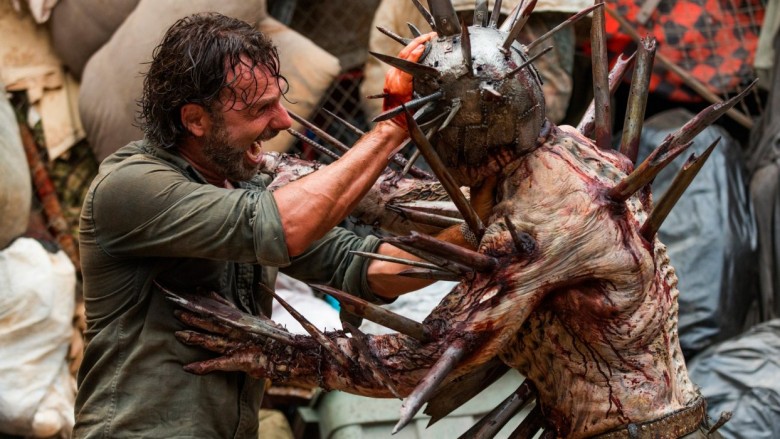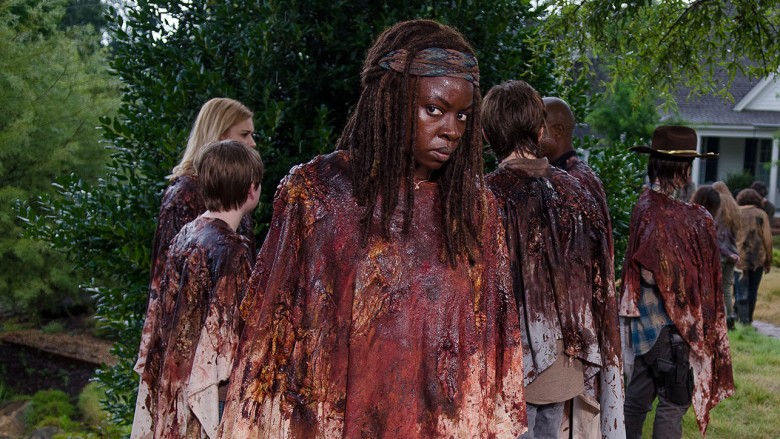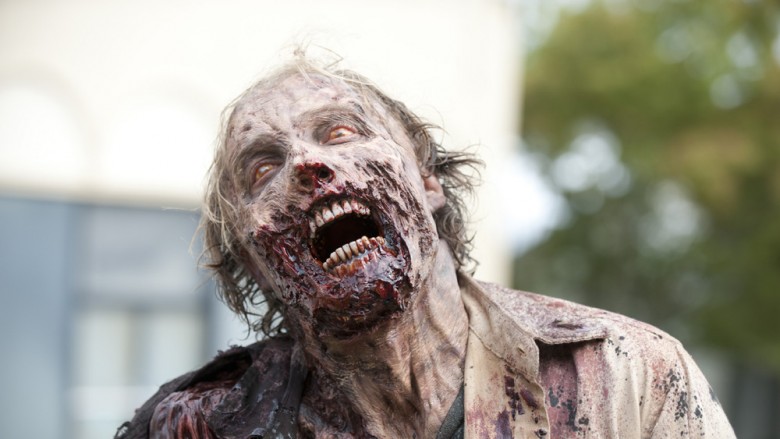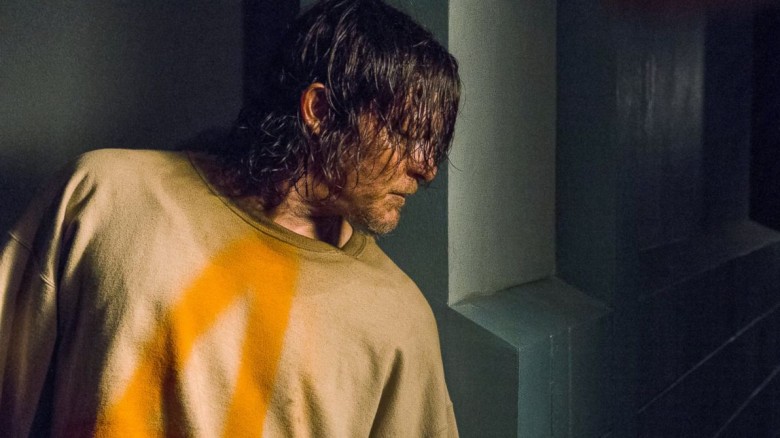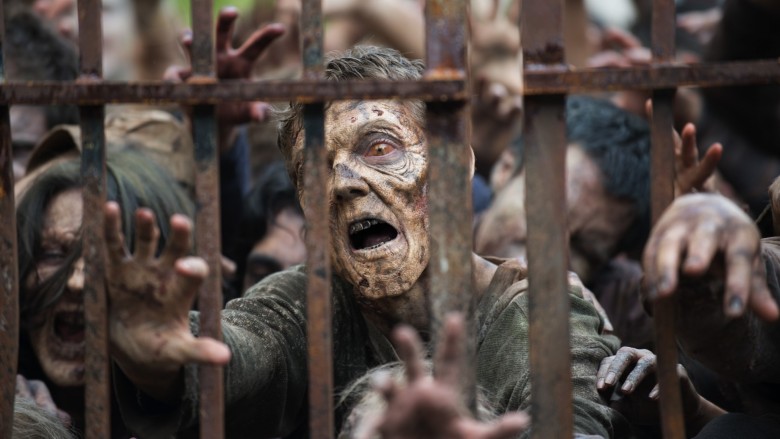Why Plot Armor Is Killing The Walking Dead
For seven seasons, AMC's The Walking Dead has featured one of the most nightmarish landscapes on television: a world where decaying corpses roam through the derelict streets, mercenary sociopaths rule their quivering subjects with an iron fist, and nobody, even the most hard-core, sharp-shooting survivor, is safe.
Uh, except Rick Grimes, of course. Because without him (and to a lesser degree, various assorted cohorts like Judith and Carl), there would be no The Walking Dead.
For the uninitiated, this phenomenon is known as plot armor, and it's a persistent problem in any show with an extended run and a high death toll. People die constantly on The Walking Dead—it's one of the show's central sources of tension and drama—but we know going in that Rick (played by Andrew Lincoln) will never be one of them. And after seven seasons of shootings, beheadings, bites, and beatings with a barbed wire-wrapped baseball bat, the inevitable survival of the show's central character is becoming a drag on the narrative.
It saps all the tension
In the show's seventh season alone, Rick has had multiple near-death experiences with foes both living (Negan, Jadis) and dead (zombies, various)—but who among us actually cared? Nobody, that's who. When the audience knows full well that Rick won't die, putting him in danger is meaningless. Of course, the other characters on the show don't share that confidence, which means that Rick's no-stakes brushes with death can still sometimes be interesting. For instance, it was touching to see Michonne pause to shed a tear when she thought he'd been eaten, even though we, the audience, knew he must have survived. But mostly, Rick's plot armor makes these moments either extremely boring or plain old infuriating. That amazing junkyard zombie that looked like an apocalyptic monster hedgehog from hell? Watching anybody else fight it would have been terrifying. Instead, they wasted it on Rick. Booo.
It makes other deaths predictable
Here's the thing: If Rick is going to live, then somebody else is going to die—and sometimes, the bracket-style elimination math required to figure out who's on the chopping block is much too easy. Since The Walking Dead can't kill off its hero, the directors are forced to destroy him in other ways, usually by killing or maiming someone he loves. Shane, Lori, and Jessie all died in service of Rick's character arc, and poor Carl took two entire bullets and lost one entire eyeball so his dad could learn important lessons about the harsh realities of life in ZombiMerica. With the possible exception of Judith (whose infant immortality clause still trumps her father's plot armor), anyone who ever gets close to Rick should make sure his or her affairs are in order. And Michonne? You in danger, girl.
It's not true to the source material
Not only has Rick's plot armor kept him alive for seven seasons against all odds, it's also combined with the limitations of television production to insulate him from suffering even as much as he does in The Walking Dead graphic novels. On screen, Rick is not only still alive but relatively unscathed, both physically and emotionally. Meanwhile, in the comics—pssst, spoiler alert—he's missing a hand and a child, having watched baby Judith die during the Governor's assault on the prison. Although it's not a surprise that AMC would choose to forgo those plot points (CGI amputation is expensive, and even in this heyday of the dark, gritty cable drama, it's still considered in poor taste to murder a baby on primetime TV), it just adds to the overall sense that Rick is some kind of superman. C'mon, guys, at least take some of his fingers. One finger. A toe?
It gives the audience trust issues
In a world overrun by the slavering undead, it's hard enough to open your heart to a character who may or may not be zombie chow before they get so much as a fully fleshed-out backstory. But when there's one central character who essentially cannot die, it puts the lives of every last beloved supporting cast member in jeopardy in a way that makes it profoundly dangerous to get too emotionally invested in anyone but Rick. Carol, the cookie-making madwoman with a steel heart and a sniper's eye; Gabriel, who suffered a crisis of faith and emerged a hero on the other side; Rosita with her prepper survivor skills and her inexplicable sock aesthetics; even Olivia, the plucky administrator who dared to slap Negan the bat-wielding maniac right in his freakin' face. Rick's plot armor puts them all in more continuous danger than a thousand zombies, and that's just not fair.
It makes the show unrealistic
Yeah, yeah, "it's unrealistic!" is a weird complaint for a primetime drama full of dead, decaying folks walking around with their intestines hanging out like haphazard party streamers. But despite its out-there premise, The Walking Dead always felt like it was otherwise rooted in cold, hard reality. If you grant that the zombie apocalypse has, indeed, occurred, everything else on the show feels more or less like something that could really happen in a world where society has utterly collapsed. And yet, the longer certain individuals survive against all odds, the more it becomes near-impossible to suspend disbelief. The only question now is whether The Walking Dead will call it quits before fans are thoroughly sick of seeing Rick Grimes continue to not die week after week—or whether the series will run on and on until even the most die-hard devotees of the Ricktator are clamoring for his head to fall off.

